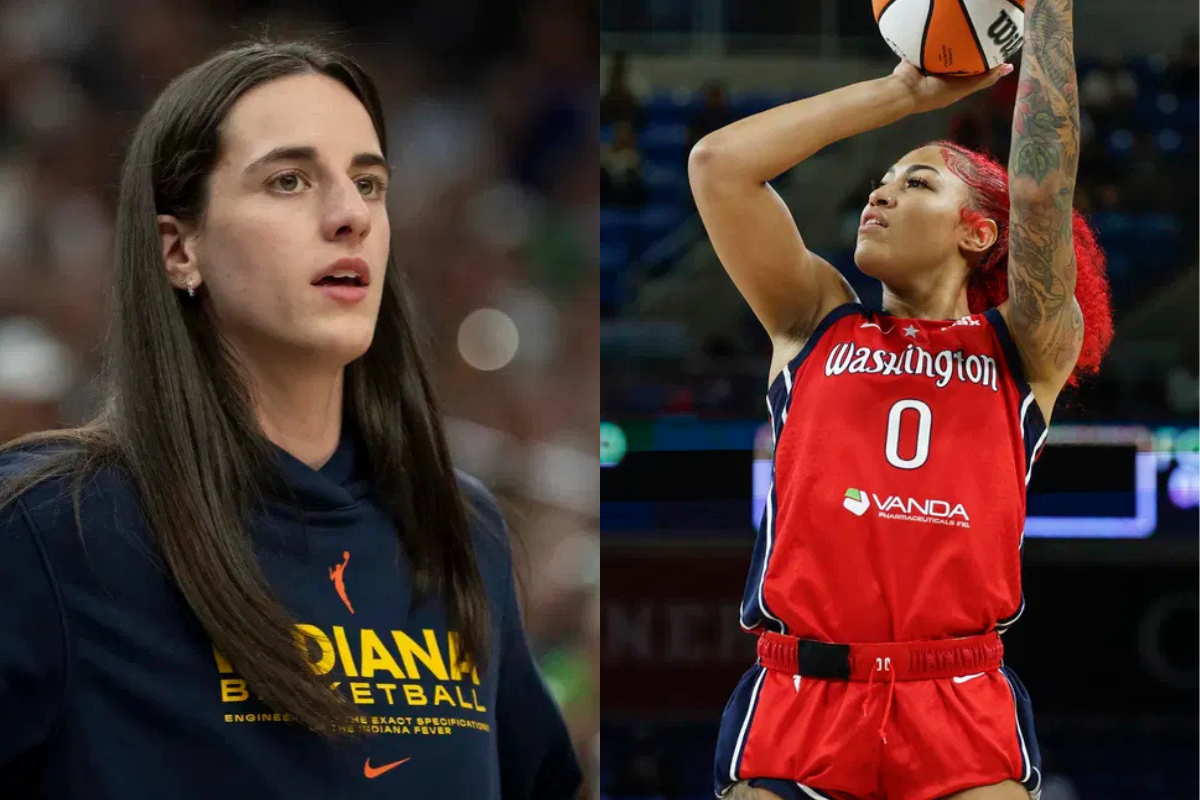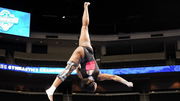
Imago
Image Credits: Imagn

Imago
Image Credits: Imagn
When the Washington Mystics moved two of their games against Indiana to a larger venue, it signified one thing: growth. The Mystics had found themselves welcoming a crowd over three times more than what their 4000-seater arena could fit. It meant celebration — for the league, for the fans in Baltimore. “They all want to go,” was the emotion. But when the day finally descended upon the two parties, not everyone came out smiling.
Watch What’s Trending Now!
During the last Fever vs Washington matchup of the season, fans pulled up in hordes to watch only the 4th WNBA game in the city. 11,000 to be more precise. But the interest was largely in one direction: Caitlin Clark. The reigning ROTY wasn’t even playing due to the groin injury, but they still showed up and hung steep close to the railing in hopes of an interaction. The cheers were loud, but not for the home team. You could guess the Mystics weren’t exactly thrilled with the reception.
“I’m hoping we can get some real support from our own fans and what we have building up,” Shakira Austin had admitted in an interview with the Baltimore Sun. The 14,000-capacity arena was meant to boost their spirits, a show of visibility across the country. But the home game was no better than a louder away game, having Austin admit, “I’m hoping Baltimore can be an arena where we can consistently play in to get those fans. But if they’re not going to cheer for us, then I don’t want to play here.” Analyst Robin Lundberg couldn’t help but expand on what that meant for the league.
ADVERTISEMENT
“What this really is, is a testament to the Caitlin Clark conundrum in a sense. Both what Caitlin Clark has brought to the sport and how the sport is struggling without Caitlin,” he opined on his namesake show. “We are still in a spot which is a struggle in a sense where, without Caitlin Clark, the media attention and the national spotlight fall off the WNBA.”
Without the Fever sensation, the All-Star viewership was down by 36% from the previous year. And the initial two games she missed earlier this season saw a decline by 40%. Clark is aware of the impact her presence has on these statistics. It is why she continues to show up for every game— keep the fan interest going and give back to the fans “who have spent so much time, money, and resources” to be there.
But for the rest of the players and the league, the bigger goal is not to let the interest be concentrated. Austin’s remarks explain just how that could impact the players. But maybe the upside is right there. As Aliyah Boston previously noted: “Hey, they might come in for one player in that moment, and then they might leave liking two or three more.” Even in Baltimore, Sports Commission President Terry Hasseltine did not hide the fact that the Claitlin Clark effect was in full effect in the area, but that’s just one side.
ADVERTISEMENT
Tamara Rogers, director for the Baltimore Cougars Legends, and Bre Barksdale, founder of BWI League have expressed how ‘the city bleeds basketball’. They see young girls looking up to the players and hoping to be in those shoes someday. Barksdale, herself grew up with the aim after watching the Houston Comets in action back in the day. So yes, Clark has a firm grip on the league’s spotlight, but growth isn’t nil; it’s just slow.
ADVERTISEMENT
Caitlin Clark’s offseason decisions already spark conversations
As Unrivaled prepares for its second season in January, they remain hopeful Clark will participate this time around. “Women’s basketball is better when she’s playing,” said Unrivaled president Alex Bazzell, emphasizing her influence on the sport. Clark has not played since July 15 due to a groin injury, and the Fever star will miss the remainder of the WNBA season, making her next moves especially important.
Bazzell stressed that Unrivaled’s approach is respectful of Clark’s personal decisions. “How we approach it is we don’t really apply pressure. Everyone who’s not currently in the league and who’s a top player, not just her, knows we’re a phone call away. It doesn’t mean there’s always going to be a spot because we have to fill spots,” he said. His comments underline that while Clark is a coveted talent, the league won’t force participation. It’s a delicate balance between opportunity and respecting her recovery timeline.
Top Stories
Tom Brady Makes Career Announcement for Vegas as Pete Carroll Addresses Losing Raiders Locker Room

Cam Newton Makes NFL Return Conditions Clear to 32 Teams as Panthers Legend Confirms Retirement Stance

J. J. McCarthy Awaits Punishment From Vikings After Rejecting Kevin O’Connell’s Instructions

$250M Michigan Donor Promises to Get Kenny Dillingham if Green Lit to Pursue ASU HC Himself

Dale Jr. Warns of Deeper Issues as Joe Gibbs Parts Ways With Decade-Long Executive

Ex-Georgia Gymnastics Star Opens Up On Facing Mistreatment Months After NCAA Program Switch

The league also has logistical limits for late additions. “We always have flexibility… But I don’t think we’re going to ruin someone else’s experience [who’s already signed] by adding a player late,” Bazzell said. Clark’s choice could influence roster moves and opportunities for other rising stars, making her decision a central offseason storyline.
ADVERTISEMENT
Clark skipped Unrivaled’s inaugural season to take a break, but now her offseason could offer valuable court time ahead of the 2026 WNBA campaign. Her presence would not only boost league visibility but also provide a chance to prepare after missing games due to injury.
ADVERTISEMENT
ADVERTISEMENT
ADVERTISEMENT

